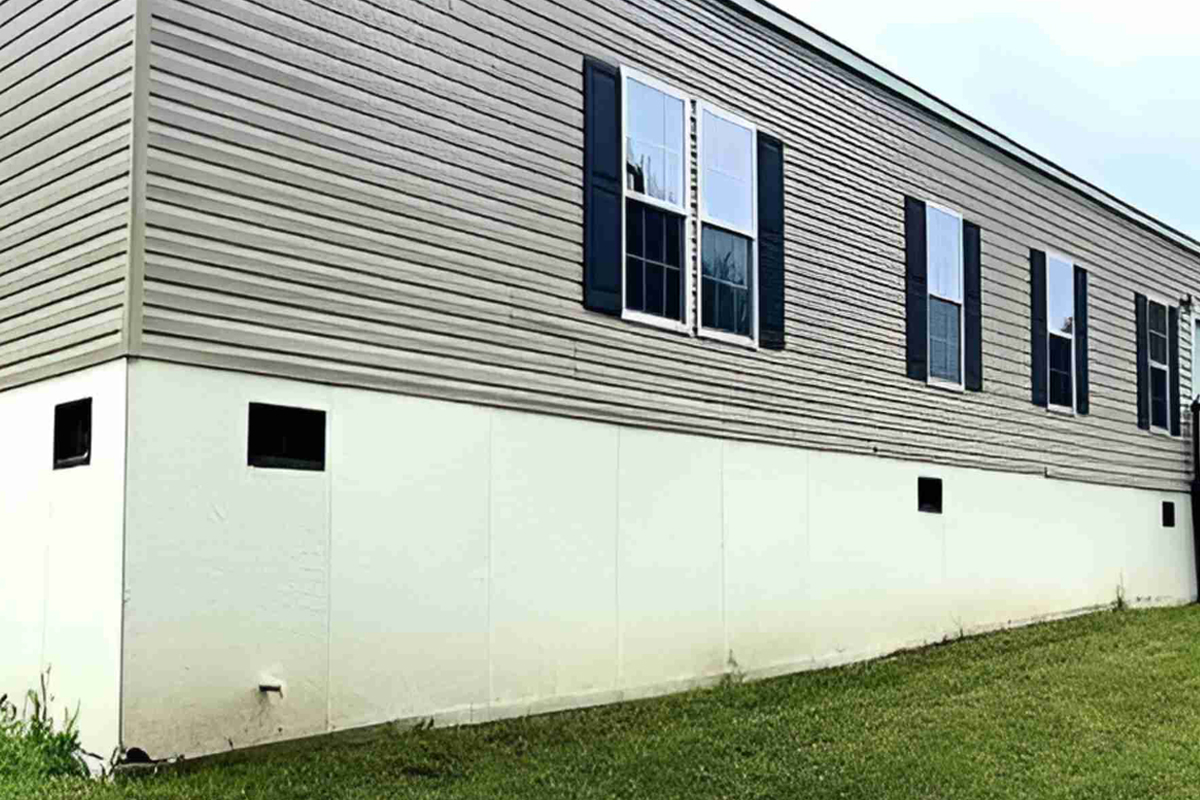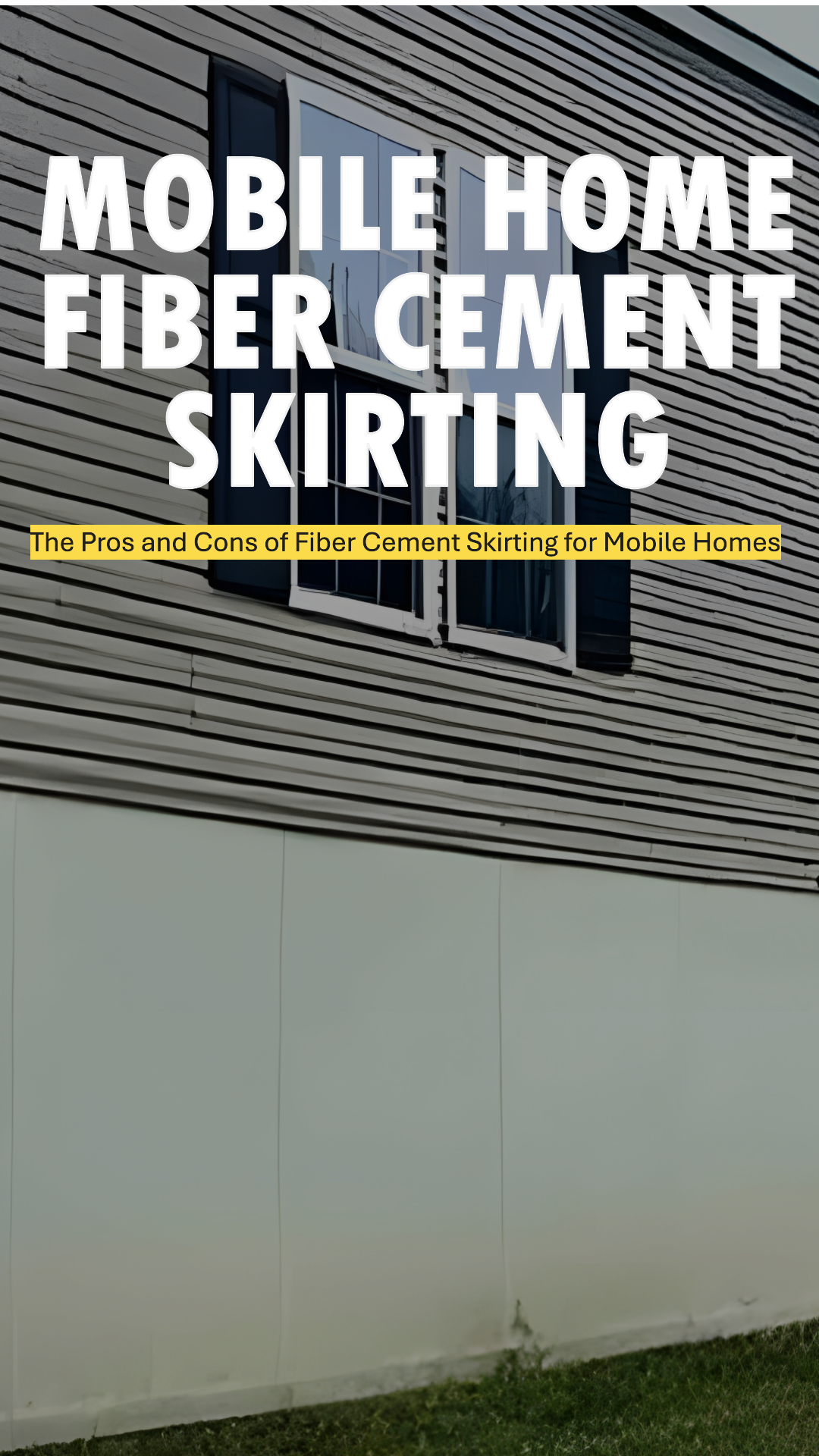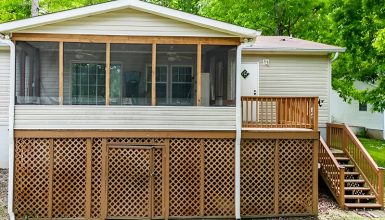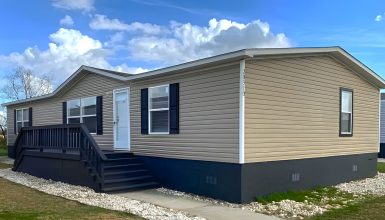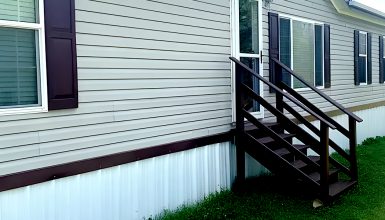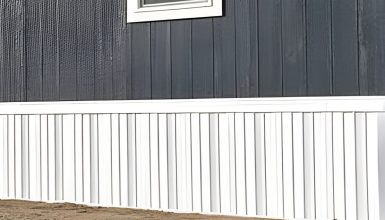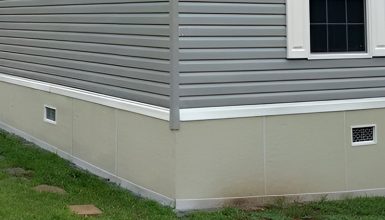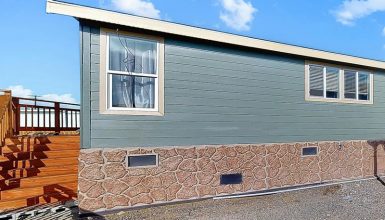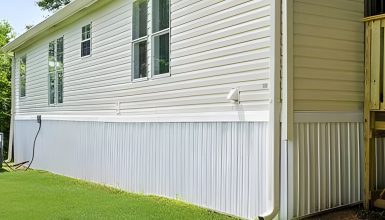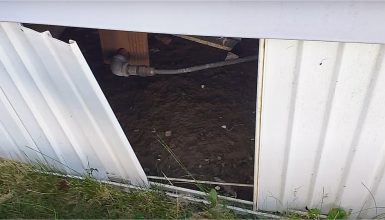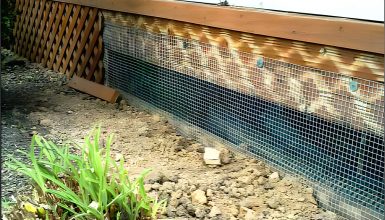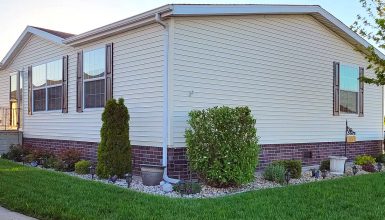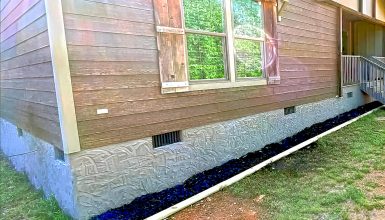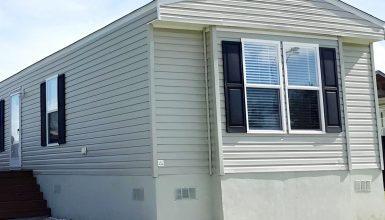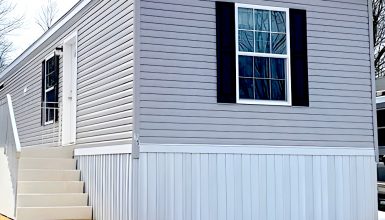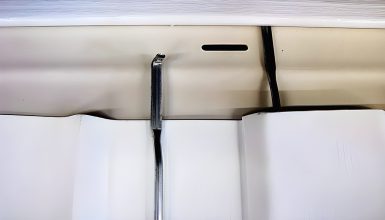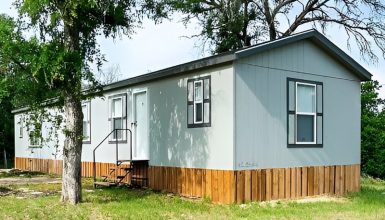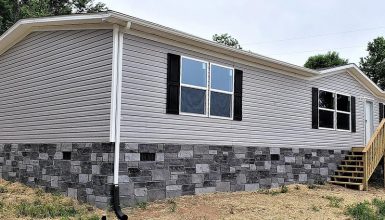Mobile homes have a unique charm and practicality. Choosing the right skirting is vital to keeping them safe and looking great. Skirting hides the underside of the home, protects against critters, and adds to curb appeal. Many materials are out there, like vinyl, metal, and wood. But have you thought about fiber cement? This material is gaining fans for good reasons. It’s tough, looks good, and lasts a long time. Let’s dive into what makes fiber cement stand out in the world of mobile home skirting.
What is Fiber Cement?
Fiber cement is a superstar in building materials. It’s made from wood fibers, sand, and cement. This blend makes it super strong and durable. It’s like getting the best of both worlds: cement’s strength and wood fibers’ flexibility.
How It’s Made
Making fiber cement involves a few steps. First, manufacturers mix cement with sand, wood fibers, and water. Then, they press this mixture into molds to form sheets or planks. These are then dried and cured. Sometimes, they add colors or textures. This process makes fiber cement tough against all kinds of weather, from blazing sun to icy cold.
Pros of Fiber Cement Skirting
Fiber cement skirting brings a lot to the table. It’s tough, looks great, is easy to keep up, and adds to your home’s safety. Fiber cement is worth considering for those looking for a reliable and attractive skirting option. Let’s dive into the pros of fiber cement skirting for mobile homes.
Durability
Fiber cement skirting is like a superhero shield for your mobile home. It stands up to sun, rain, wind, and even snow without a problem. Termites and other pests? They don’t stand a chance. This toughness means it doesn’t rot or warp over time. So, you get peace of mind knowing your home is protected year after year.
Appearance
This material is also a star when it comes to looks. Want the cozy feel of wood or the elegance of stone? Fiber cement can mimic these textures, giving your home a high-end look without the high-end price. Plus, it comes in a variety of colors and styles. This means you can find the perfect match for your home’s vibe.
Maintenance
Here’s some good news: fiber cement is easy to care for. It doesn’t need much to keep looking good. A simple wash with a hose now and then is often all it takes. Unlike wood, it doesn’t need regular painting or sealing. This low maintenance saves you time and money, making your life easier.
Fire Resistance
Safety is critical, and fiber cement skirting adds an extra layer of protection. It’s non-combustible, meaning it doesn’t catch fire easily. This feature is a big plus in areas prone to wildfires or for those who just want to sleep a bit easier at night. It’s like having a built-in safety feature around your home.
Cons of Fiber Cement Skirting
So, while fiber cement skirting has perks, it also has a few considerations.
Cost
First up, let’s talk about cost. Fiber cement skirting is a bit like a premium coffee blend. It’s excellent, but it does cost more than your regular cup. When you compare it to materials like vinyl or metal, fiber cement is pricier. This is because it’s made to last and look good doing it. So, while it’s an investment, it’s essential to think about your budget.
Installation Complexity
Installing fiber cement skirting is a bit like putting together a complex puzzle. It requires special tools and know-how. Unlike vinyl, which is pretty straightforward, fiber cement can be tricky. You might need to call in a pro, which adds to the cost. If you love DIY projects, this could be a challenge. But it’s worth considering if you’re not ready for a big project.
Weight
Fiber cement is heavy. Think of it as the heavyweight champion of skirting materials. This means it’s sturdy, but it also means it can be tough to handle. Shipping costs might be higher, and you’ll need a few strong hands to help with installation. This heaviness is a sign of quality, but it’s something to remember.
Moisture Sensitivity
Last but not least, let’s talk about water. Fiber cement is like that friend who loves sunny days but struggles in the rain. If not sealed properly, it can absorb moisture. This can lead to problems over time, like cracking or warping. It’s not a big deal if you stay on top of maintenance, but it’s worth knowing.

